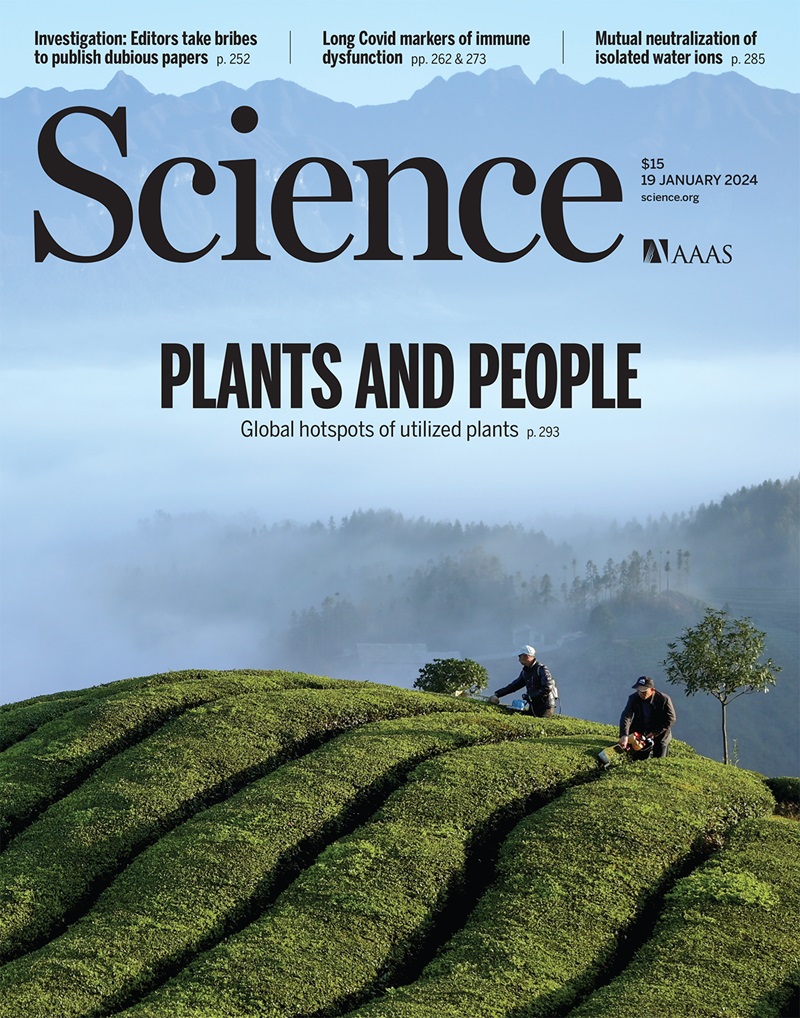Zincore, an atypical coregulator, binds zinc finger transcription factors to control gene expression
IF 45.8
1区 综合性期刊
Q1 MULTIDISCIPLINARY SCIENCES
引用次数: 0
Abstract
Zinc finger proteins (ZNFs) are the largest family of transcription factors, yet how they activate gene expression remains unclear. In this study, we identified Zincore, a protein complex consisting of QRICH1 and SEPHS1, as a ZNF-specific coregulator essential for embryonic development in mice and associated with developmental syndromes in humans. We also identified ZFP91 as a representative Zincore client, binding the conserved promoter motif CTTTAAR. Cryo–electron microscopy of a Zincore-ZFP91-DNA complex revealed a SEPHS1 arginine clamp to recognize the DNA-bound zinc finger domains. This mode of binding explains recognition of different ZNFs and stabilizes ZFP91 onto its cognate DNA motif. Thus, our study identified Zincore as a ZNF-specific coregulator essential for development, involving a distinctive mechanism that locks ZNFs onto DNA and regulates transcription.

Zincore是一种非典型的共调节因子,结合锌指转录因子控制基因表达
锌指蛋白(ZNFs)是最大的转录因子家族,但它们如何激活基因表达尚不清楚。在这项研究中,我们确定了Zincore,一种由QRICH1和SEPHS1组成的蛋白复合物,是小鼠胚胎发育所必需的znf特异性共调节因子,并与人类发育综合征相关。我们还将ZFP91确定为具有代表性的Zincore客户,它结合了保守的启动子基元CTTTAAR。Zincore-ZFP91-DNA复合体的低温电子显微镜显示SEPHS1精氨酸钳可以识别dna结合的锌指结构域。这种结合模式解释了对不同ZNFs的识别,并将ZFP91稳定在其同源DNA基序上。因此,我们的研究确定了Zincore是发育所必需的znf特异性共调节因子,涉及将znf锁定在DNA上并调节转录的独特机制。
本文章由计算机程序翻译,如有差异,请以英文原文为准。
求助全文
约1分钟内获得全文
求助全文
来源期刊

Science
综合性期刊-综合性期刊
CiteScore
61.10
自引率
0.90%
发文量
0
审稿时长
2.1 months
期刊介绍:
Science is a leading outlet for scientific news, commentary, and cutting-edge research. Through its print and online incarnations, Science reaches an estimated worldwide readership of more than one million. Science’s authorship is global too, and its articles consistently rank among the world's most cited research.
Science serves as a forum for discussion of important issues related to the advancement of science by publishing material on which a consensus has been reached as well as including the presentation of minority or conflicting points of view. Accordingly, all articles published in Science—including editorials, news and comment, and book reviews—are signed and reflect the individual views of the authors and not official points of view adopted by AAAS or the institutions with which the authors are affiliated.
Science seeks to publish those papers that are most influential in their fields or across fields and that will significantly advance scientific understanding. Selected papers should present novel and broadly important data, syntheses, or concepts. They should merit recognition by the wider scientific community and general public provided by publication in Science, beyond that provided by specialty journals. Science welcomes submissions from all fields of science and from any source. The editors are committed to the prompt evaluation and publication of submitted papers while upholding high standards that support reproducibility of published research. Science is published weekly; selected papers are published online ahead of print.
 求助内容:
求助内容: 应助结果提醒方式:
应助结果提醒方式:


